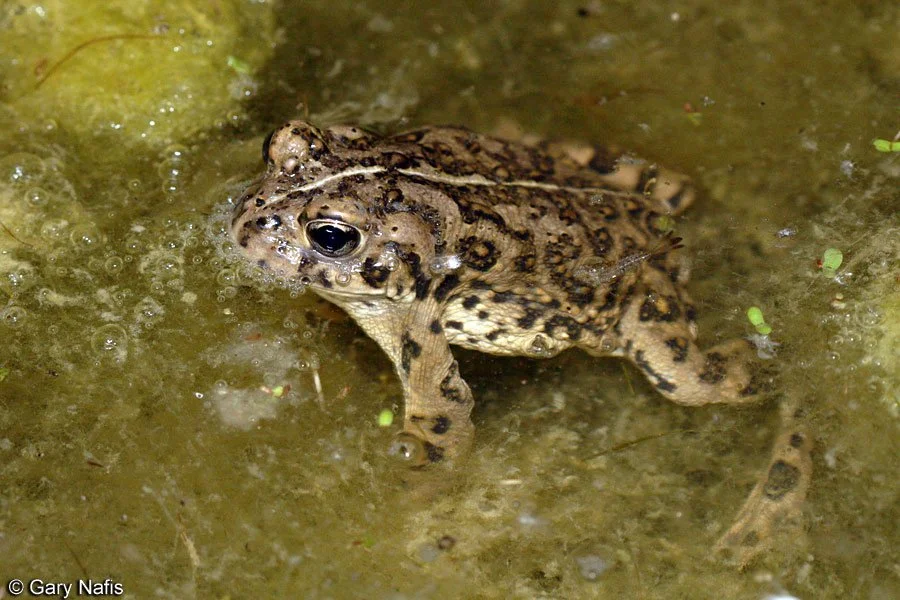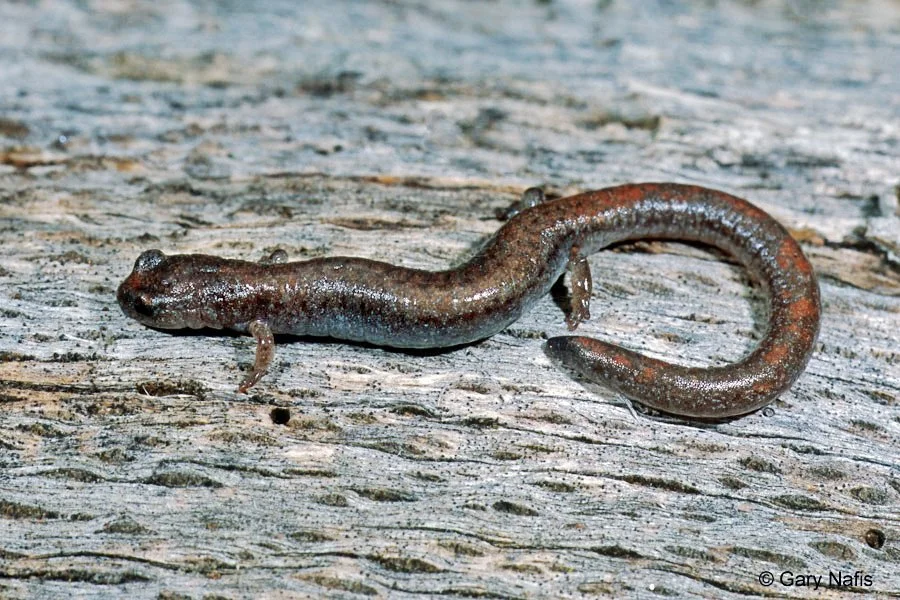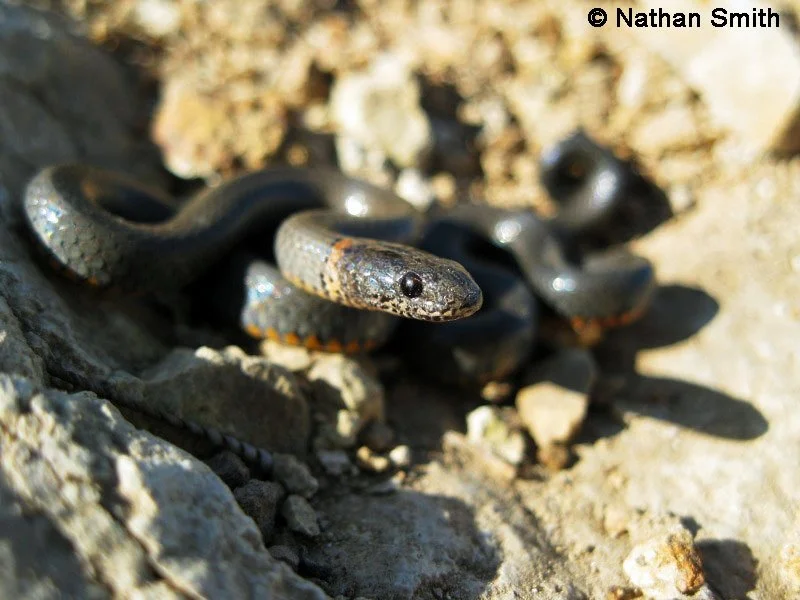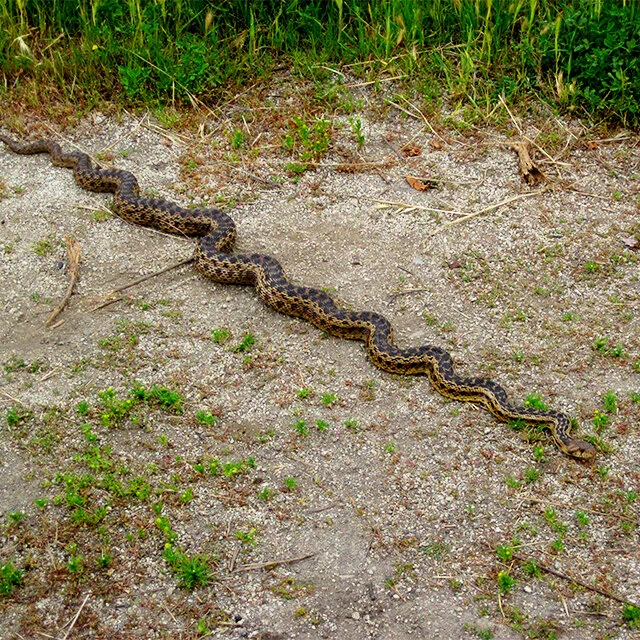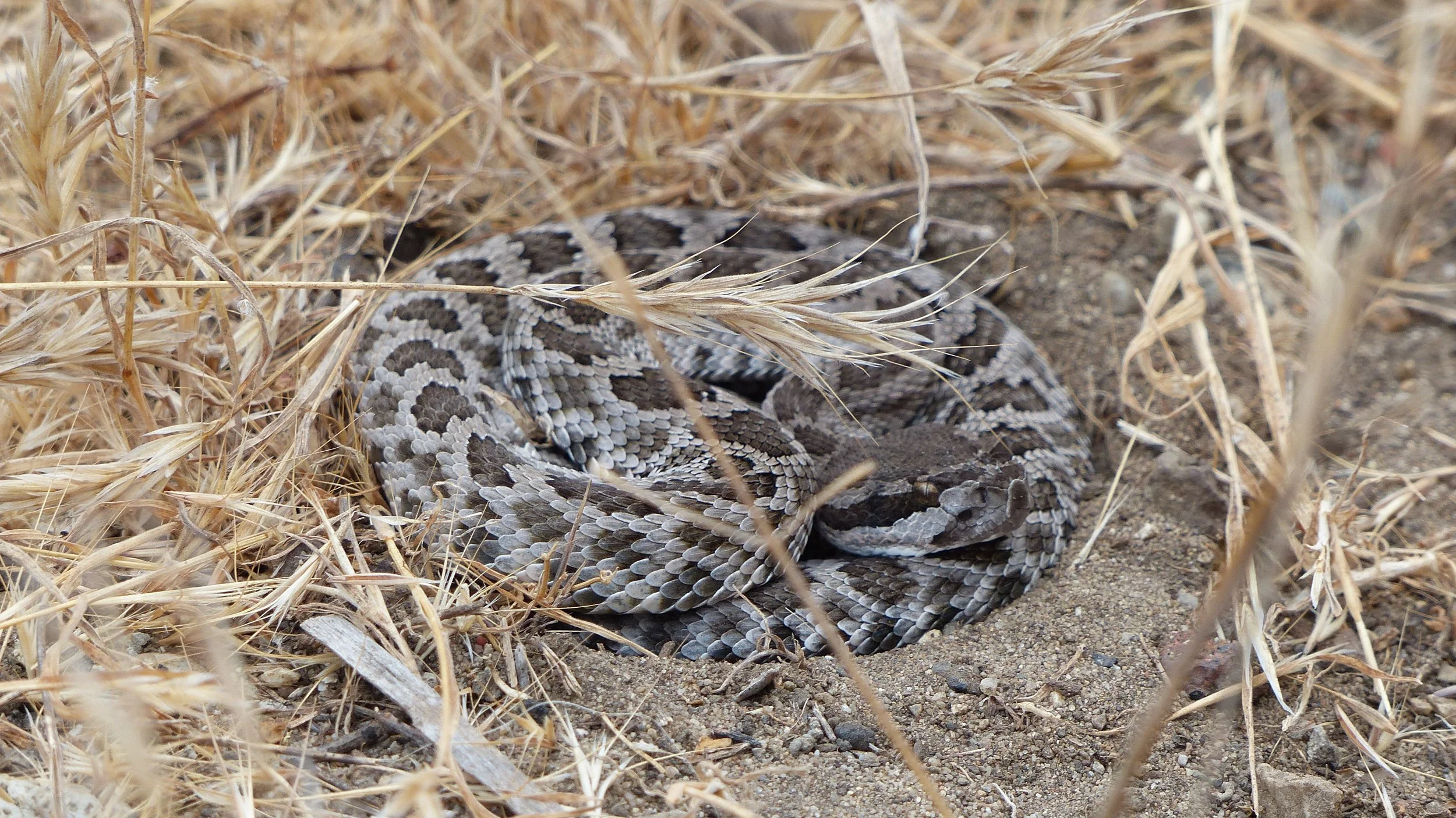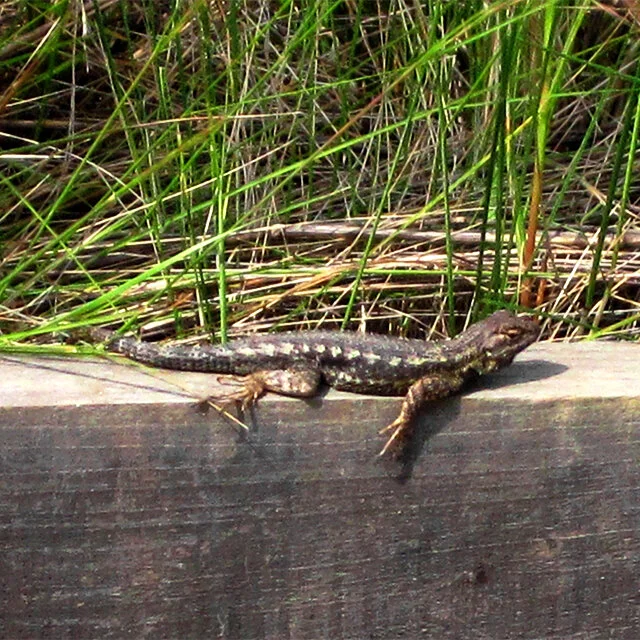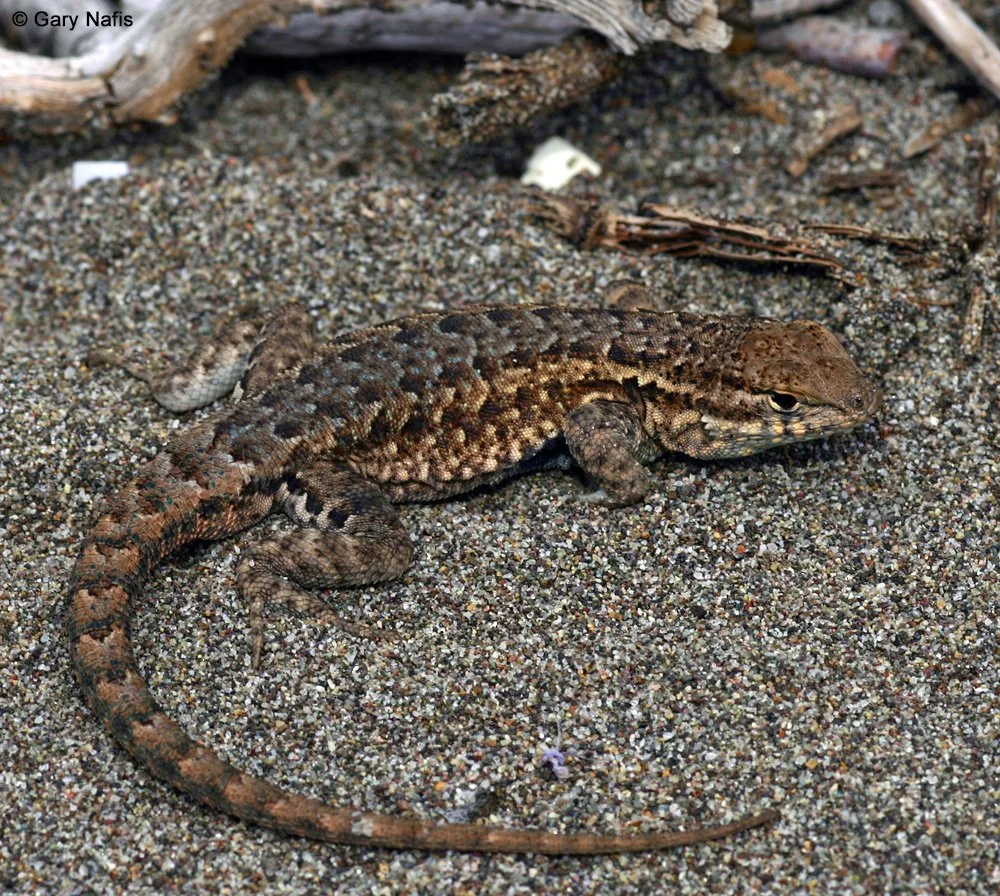REPTILES
AMERICAN BULLFROG (Lithobates catesbeianus)
Fun Fact: The adult male American Bullfrog is very aggressive and will physically wrestle with other males in their territory.
Diet: Snakes, worms, crustaceans, insects, and even tadpoles.
Habitat: Lakes, marshes, swamps, ponds, and rivers.
Overview: The American Bullfrog is the largest frog found in North America and can be found all across the country in areas that are warm and have a source of water. They can even be found in California, even though they are not native to the area.
Resources:
ADW
https://animaldiversity.org/accounts/Lithobates_catesbeianus/
BAJA-CALIFORNIA TREEFROG (Pseudacris hypochondriaca)
Fun Fact: The Baja California treefrog changes its color in relation to the air humidity and temperature.
Diet: Invertebrates, and small insects
Habitat: Forest, woodlands, streams, marshes, and even urban areas.
Overview: The Baja California treefrog is a common resident of Catalina, Channel islands, and other parts of California. It can usually be seen displaying a reddish color to deter predators and is the most abundant treefrog in California.
Resources:
National Park Service
https://www.nps.gov/chis/learn/nature/baja-california-treefrog.htm
CALIFORNIA KINGSNAKE (Lampropeltus californiae )
Fun Fact: The California Kingsnake is immune to the venom of rattlesnakes.
Diet: Small mammals, lizards, snakes, frogs, and large invertebrates.
Habitat: Deserts, grasslands, marshes, and woodlands.
Overview: The California Kingsnake is commonly found in California and can be spotted by its either black or brown striped body. They are one of the few snake predators of the rattlesnake, and have very helpful roles in their habitats.
Resources:
California Herps
http://www.californiaherps.com/snakes/pages/l.californiae.html
CALIFORNIA TOAD (Anaxyrus boreas halophilus)
Fun Fact: The California toad defends itself from predators using poisonous secretions from paratoid glands and warts.
Diet: Small invertebrates
Habitat: Marshes, creeks, woodlands, and desert riparian areas
Overview: The California toad has a green-brown appearance with rusty colored warts and a large light stripe down the middle. They are active in both the day and night, and can be found across California near water sources. They have a surprisingly long life span of up to nine years.
Resources:
Ojai Valley Land Conservancy
GARDEN SLENDER SALAMANDER (Batrachoseps major)
Fun Fact: The Garden Slender salamander respire through their skin and do not have lungs.
Diet: Small arthropods and invertebrates
Habitat: Coastal scrub, woodland, and residential areas
Overview: The Garden Slender salamander is commonly found throughout the Los Angeles area. It is tricky to determine if you see one or the Black-bellied Slender salamander since they look almost exactly the same, however the Garden Slender has a lighter gray belly.
Resources:
California Herps
http://www.californiaherps.com/salamanders/pages/b.m.major.html
RED EARED SLIDER (Trachemys scripta elegans)
Fun Fact: The Red-eared slider has a unique red stripe behind their eyes.
Diet: Insects, small invertebrates, snakes, fish, and aquatic vegetation.
Habitat: Canals, marshes, ponds, creeks, and brackish waters.
Overview: The Red-eared slider is a commonly found turtle throughout the United States, since they are able to survive in many different habitats. They are not native to California, but at some point must have been introduced and can be found in hotspots scattered around the state.
Resources:
USGS
https://nas.er.usgs.gov/queries/factsheet.aspx?SpeciesID=1261
SAN BERNARDINO RING-NECKED SNAKE (Diadophis punctatus modestus)
Fun Fact: The San Bernardino ring-necked snake has a yellow to red gradient underside.
Diet: Insects, small frogs, and small salamanders.
Habitat: Wetlands, meadows, grasslands, chaparral, and woodlands.
Overview: The San Bernardino ring-necked snake is endemic to California, and is found up along the southern coast. They can usually be spotted under rocks or in crevices, and can be identified by their yellow to red gradient underside. Be careful though, they have a mild venom that can incapacitate their prey.
Resources:
California Herps
http://www.californiaherps.com/snakes/pages/d.p.modestus.html
SAN DIEGO ALLIGATOR LIZARD (Elgaria multicarinata webbii)
Fun Fact: The San Diego Alligator Lizard can detach its tail and will have it writhe around to distract a predator.
Diet: Insects
Habitat: Grassland, chaparral, woodlands, and forests.
Overview: The San Diego Alligator lizard can be found throughout Southern California and parts of Mexico, and received its name because it has a long and wide body that appears like an alligator. When they move they slither sneakily and this has been known to resemble something like a snake.
Resources:
California Herps
http://www.californiaherps.com/lizards/pages/e.m.webbii.html
SAN DIEGO GOPHER SNAKE (Pituophis catenifer annectens)
Fun Fact: The San Diego Gopher snake looks very similar to a rattlesnake and because of that they are frequently killed.
Diet: Small mammals, lizards, and insects,
Habitat: Grassland, coastal scrub, riparian regions, desert and woodlands.
Overview: The San Diego Gopher snake, as the name suggests, is commonly found in southern California and up the coast into Seattle. They have a similar appearance to a rattlesnake but have smaller heads and more circular spots on their backs. They even have a similar rattling defence noise, but don’t worry they are not venomous and very helpful for the local habitat.
Resources:
California Herps
http://www.californiaherps.com/snakes/pages/p.c.annectens.html
SOUTHERN CALIFORNIA LEGLESS LIZARD (Anniella stebbinsi)
Fun Fact: Like you would expect the Southern California legless lizard has no legs, and crawls like a snake.
Diet: Insects
Habitat: Coastal edges, dunes, desert, and woodlands.
Overview: The Southern California legless lizard is commonly found at the sand dunes near LAX airport, and will venture up towards the Ballona wetlands. They have a unique shiny, almost holographic, appearance that makes them stand out, however since they don’t have legs they can sometimes appear to be a snake.
Resources:
California Herps
http://www.californiaherps.com/lizards/pages/a.stebbinsi.html
SOUTHERN PACIFIC RATTLESNAKE (Crotalus oreganus helleri)
Fun Fact: The Southern Pacific Rattlesnake has an extremely dangerous venom that can be harmful or even deadly to humans.
Diet: Birds, lizards, snakes, insects, and small mammals.
Habitat: Desert, coastal scrub, plains, chaparral, and woodlands.
Overview: The Southern Pacific rattlesnake is found in Southern California, including Ballona Wetlands. They can be identified by their triangular head, rattle tail, and if their coloration is light enough, their diamond patterned topside. They can also have a very dark colored appearance. To learn more about IDing it and what to do if you come across one, read our blog “Rattlesnakes at Ballona Wetlands”.
Resources:
California Herps
http://www.californiaherps.com/snakes/pages/c.o.helleri.html
WESTERN FENCE LIZARD (Sceloporus occidentalis longipes)
Fun Fact: “Push-ups” and head bobs can be used as a territorial and mating display.
Diet: Insectivore, eating mostly insects.
Habitat: Common throughout California except forested and desert habitats.
Overview: One of the most commonly seen species during tours when the sun is out. Basking on trees, rocks, and features above the ground like fence posts gives this species its name. The Western fence lizard will dart along trails to hide in burrows and under things upon one’s approach.
WESTERN SIDE-BLOTCHED LIZARD (Uta stansburiana elegans)
Fun Fact: The male Western side-blotched lizard can either have a blue, orange, or yellow marked throat.
Diet: Insects
Habitat: Chaparral, coastal scrubs, desert, and rocky regions.
Overview: The Western side-blotched lizard is a common species that can range through most of California, Mexico, and Nevada. The males have a rock-paper-scissors mating strategy where a male is either one of the color morphs, and whatever color they are determines what type of role they play. This species is active all year round and can be spotted run quickly under rocks.
Resources:
California Herps
http://www.californiaherps.com/lizards/pages/u.s.elegans.html




